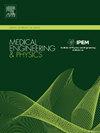Ensemble learning of deep CNN models and two stage level prediction of Cobb angle on surface topography in adolescents with idiopathic scoliosis
IF 1.7
4区 医学
Q3 ENGINEERING, BIOMEDICAL
引用次数: 0
Abstract
This study employs Convolutional Neural Networks (CNNs) as feature extractors with appended regression layers for the non-invasive prediction of Cobb Angle (CA) from Surface Topography (ST) scans in adolescents with Idiopathic Scoliosis (AIS). The aim is to minimize radiation exposure during critical growth periods by offering a reliable, non-invasive assessment tool. The efficacy of various CNN-based feature extractors—DenseNet121, EfficientNetB0, ResNet18, SqueezeNet, and a modified U-Net—was evaluated on a dataset of 654 ST scans using a regression analysis framework for accurate CA prediction. The dataset comprised 590 training and 64 testing scans. Performance was evaluated using Mean Absolute Error (MAE), Root Mean Square Error (RMSE), and accuracy in classifying scoliosis severity (mild, moderate, severe) based on CA measurements. The EfficientNetB0 feature extractor outperformed other models, demonstrating strong performance on the training set (, R) and achieving an MAE of and RMSE of on the test set. In terms of scoliosis severity classification, it achieved high precision (84.62%) and specificity (95.65% for mild cases and 82.98% for severe cases), highlighting its clinical applicability in AIS management. The regression-based approach using the EfficientNetB0 as a feature extractor presents a significant advancement for accurately determining CA from ST scans, offering a promising tool for improving scoliosis severity categorization and management in adolescents.
深度CNN模型的集成学习与青少年特发性脊柱侧凸表面形貌Cobb角的两阶段水平预测
本研究采用卷积神经网络(cnn)作为附加回归层的特征提取器,对青少年特发性脊柱侧凸(AIS)的表面形貌(ST)扫描的Cobb角(CA)进行非侵入性预测。目的是通过提供一种可靠的、非侵入性的评估工具,最大限度地减少关键生长时期的辐射暴露。使用回归分析框架在654个ST扫描数据集上评估了各种基于cnn的特征提取器(densenet121、EfficientNetB0、ResNet18、SqueezeNet和改进的u - net)的有效性,以准确预测CA。该数据集包括590个训练扫描和64个测试扫描。使用平均绝对误差(MAE)、均方根误差(RMSE)和基于CA测量的脊柱侧凸严重程度(轻度、中度、重度)分类的准确性来评估性能。effentnetb0特征提取器优于其他模型,在训练集上表现出色(R=0.96, R=20.93),在测试集上的MAE为6.13°,RMSE为7.5°。在脊柱侧凸严重程度分类方面,该方法具有较高的准确率(84.62%)和特异性(轻度95.65%、重度82.98%),突出了其在AIS管理中的临床适用性。使用EfficientNetB0作为特征提取器的基于回归的方法在从ST扫描中准确确定CA方面取得了重大进展,为改善青少年脊柱侧凸严重程度分类和管理提供了一个有前途的工具。
本文章由计算机程序翻译,如有差异,请以英文原文为准。
求助全文
约1分钟内获得全文
求助全文
来源期刊

Medical Engineering & Physics
工程技术-工程:生物医学
CiteScore
4.30
自引率
4.50%
发文量
172
审稿时长
3.0 months
期刊介绍:
Medical Engineering & Physics provides a forum for the publication of the latest developments in biomedical engineering, and reflects the essential multidisciplinary nature of the subject. The journal publishes in-depth critical reviews, scientific papers and technical notes. Our focus encompasses the application of the basic principles of physics and engineering to the development of medical devices and technology, with the ultimate aim of producing improvements in the quality of health care.Topics covered include biomechanics, biomaterials, mechanobiology, rehabilitation engineering, biomedical signal processing and medical device development. Medical Engineering & Physics aims to keep both engineers and clinicians abreast of the latest applications of technology to health care.
 求助内容:
求助内容: 应助结果提醒方式:
应助结果提醒方式:


